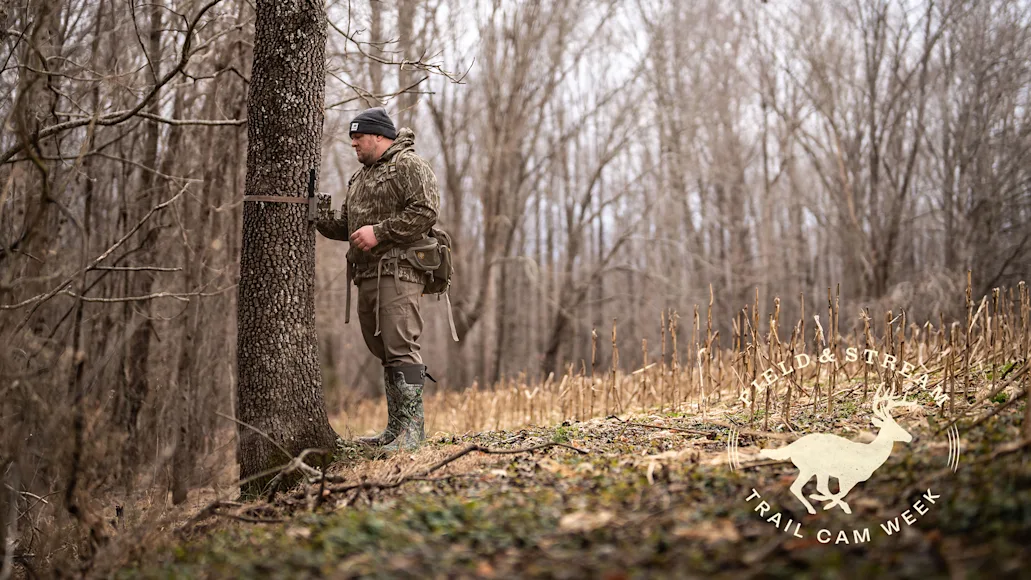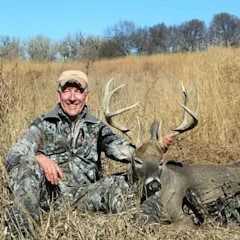Pepper a buck’s home range with dozens of trail cameras and you'll get a decent idea of where he likes to bed, feed, and chase does—and when he likes to engage in those activities. But let’s be honest. Even with hundreds of images, you'd need as many personal encounters as possible with that deer, and maybe even some drone footage, to truly complete the intel.
Getting good trail-cam pics of a buck is undeniably cool, and of course they tell us much more about that buck than we knew before we had the shots. But you should never make the mistake of thinking those pictures are the big reveal about an individual deer. Sure, they’re a piece of the puzzle—an important piece—but there are a handful of things your cams probably aren't telling you. Here are five, plus tips for how to complete that picture, including by using your cameras a little more strategically.
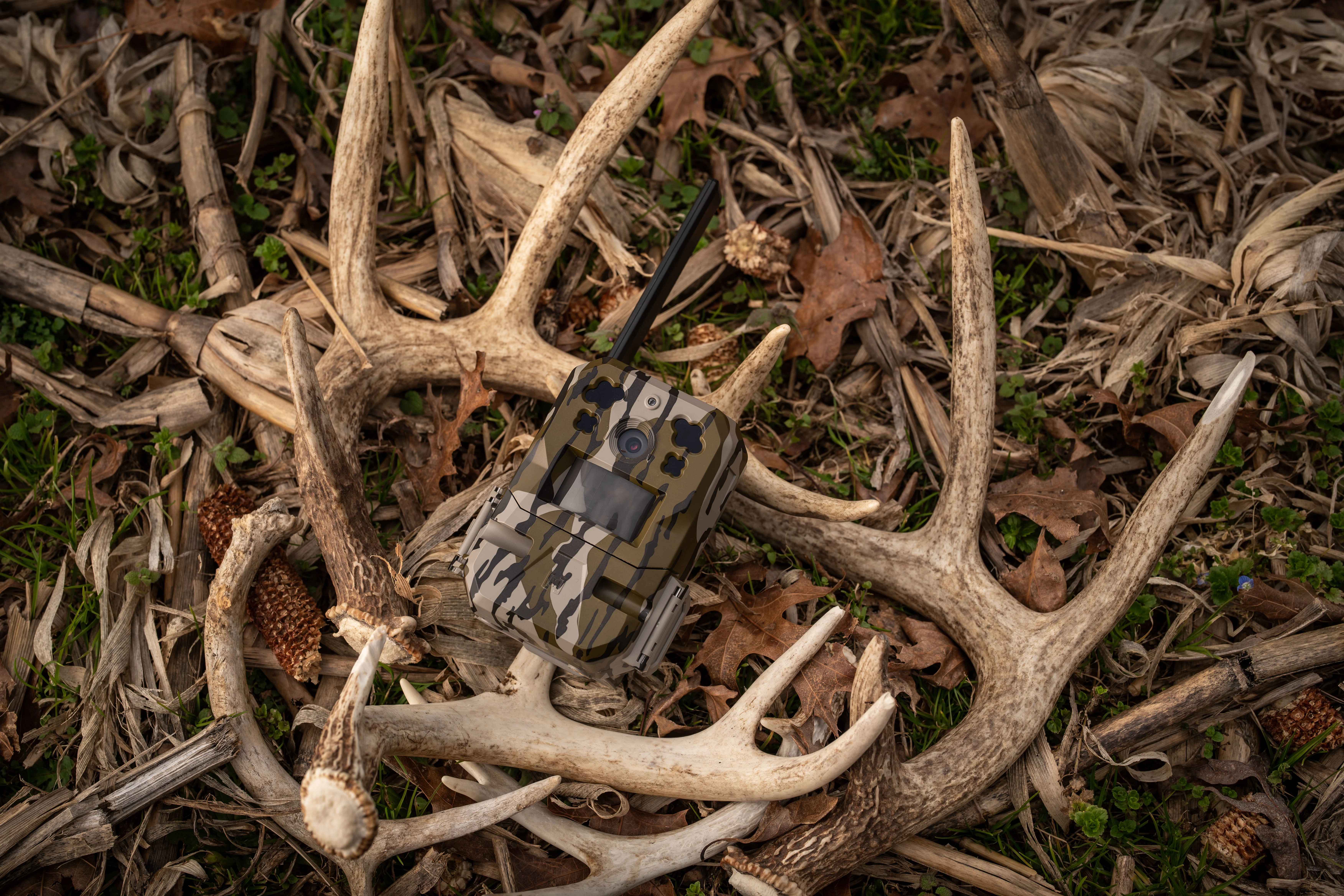
1) Trail-Camera Pictures Only Hint at Activity Periods
A buck we called “Crab Claw” was the most vivid example of how trail cam pics can steer you wrong about when a deer moves. While I had quite a few pics of this tall, narrow 10-point from late September through late October, every shot occurred at night. When I showed my dad Crab Claw’s highlight reel one day, he came to the same conclusion most of us would; “Great deer,” he said. “But he’s nocturnal.” While I tend to run on eternal-optimist mode and wanted to believe the buck was vulnerable, how could I disagree with dad based on the pics?
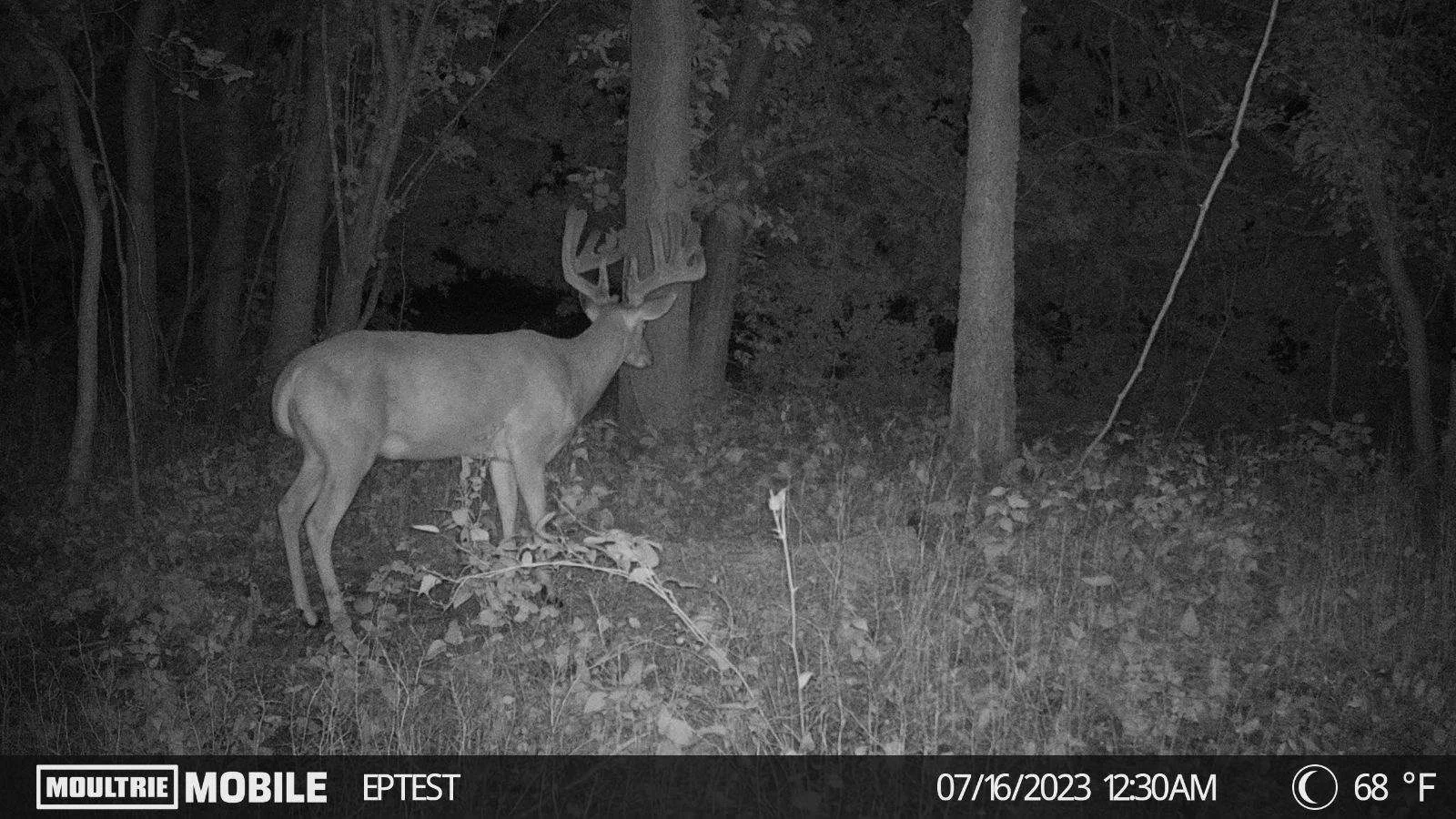
Most of my pics of this buck came from a pair of mock scrapes located close to my home. One late-October afternoon, I put my dad in a stand overlooking a small food plot, a setup that was three quarters of a mile from those scrapes. Dad saw a few does and glimpsed one small buck early and thought the action was over with an hour of shooting light left. Then a buck strode confidently into the plot, made a scrape, and walked 10 yards from Dad’s stand. He made good on the shot, and we found Crab Claw after a short tracking job. Shortly after sunset, we were loading the supposedly nocturnal buck into my truck.
The Takeaway
Obviously there are bucks that limit most of their movement to after nightfall. But if all your after-dark images of a buck come from one camera or several cams in the same area, don’t fall into the trap of believing your buck is a vampire. Like Crab Claw, he might be appearing in front of your cams after dark, while he’s happily trotting around during daylight in a different part of his home range. Keep moving your cameras around or, if you can afford it, simply get more of them out there to get a more complete picture.
2) You Only Get a Glimpse of a Buck’s Home Range With a Trail Camera

Just as with activity periods, trail cams can tip us off to a buck’s favorite haunts. But unless you’ve peppered a huge area with cameras, you’re seeing just a snapshot of his territory. Plus, his appearance there can be the result of external factors; a fresh food source coming into its own, a resident doe or two coming into estrous, hunting pressure on adjacent properties, even a buck out on a breeding excursion that takes him out of his home range for a few days.
Any one of these factors can explain those one-and-done bucks; critters you get a pic or two of, then they seemingly disappear. And then there’s this; some bucks are simply camera-shy. I never used to believe in this much, until I talked to one of my outfitter buddies. Ted had a camera on a favorite pond on one of his Wisconsin farms. And though he had a few pics of a giant deer, the buck seemed to disappear mid-season. “Then I had one of my hunters on a stand near that pond,” he said. “And one evening he watched that buck walk up behind that camera, make just a short loop around it, drink from the pond and leave. I checked that card, and I never had a pic of that buck. He was still using the area—and in the daylight. He’d just become wise to cameras somehow and avoided them.”
The Takeaway
Obviously any pic of a buck is good news, and if you’ve got a slew of them you’re a huge step closer to figuring out his favorite areas and when he uses them. But never content yourself with present knowledge. Keep moving your cameras around and seek new information, more pieces of the where-does-the-buck-live puzzle. And if you suspect you’re dealing with a camera-shy customer, try some tricks (like hanging your cameras higher, camouflaging them better, moving them slightly, and reducing human scent) in the same general area where you grabbed the originals.
3) Still Pics Alone Rarely Reveal a Buck's Personality
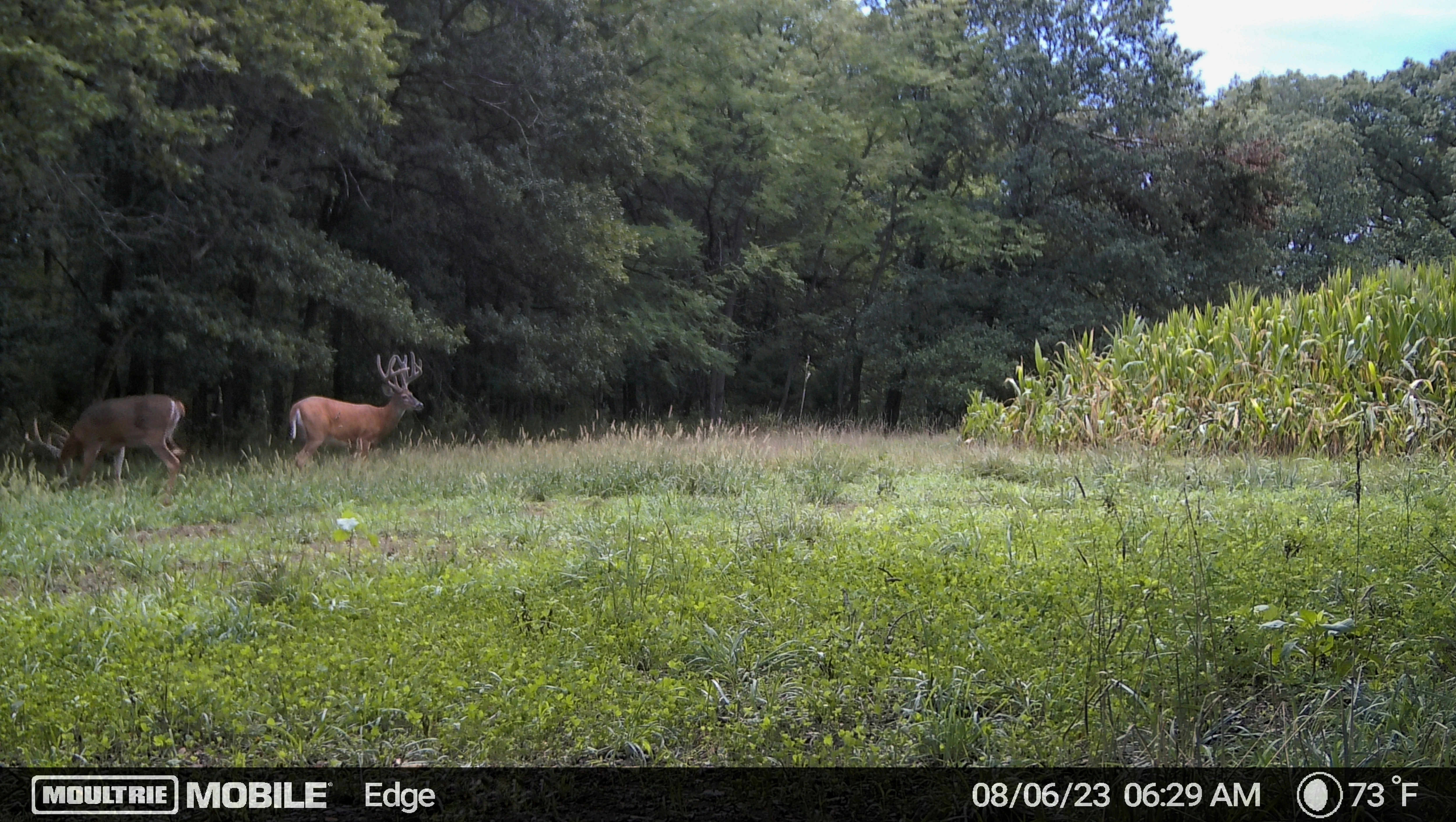
One of the most common misperceptions hunters have about big-racked bucks is that they are “dominant” or feared by other bucks in the area. Naturally this is sometimes true. In areas with few mature bucks, any 3-½-year-old will likely rule the roost. But in areas with a solid number of older males, the ones with the baddest attitude can intimidate bucks with much bigger racks, often by just appearing on the scene. Your typical trail-cam pics rarely tell you which bucks are badasses and which are pushovers.
Why is this important? Because knowing a buck’s personality can influence how you hunt him. For example, if I see a tall-racked 10 point passing by my stand out of range, I’m likely reaching for a grunt tube to lure him closer. And if he doesn’t respond, I’ll probably pull out all the stops and rattle and/or snort-wheeze at him. But if that’s a sub-dominant buck that avoids fights and confrontations with other bucks, any of these tactics can prove disastrous. If at all possible, I’d like to know where this boy fits in the pecking order before I get aggressive with him, especially if he’s on a natural movement pattern that I can adjust to on a subsequent hunt.
The Takeaway
I like to start judging buck pecking order early, often when bucks are still in velvet and in bachelor groups. Just the other day I was scanning some recent pics and noticed one nice 8-point kick at a similar-sized buck as they fed together in a food plot. The kicker will likely be a dominant buck, at least with the deer in that pic, but perhaps with others. One way to further nail this down is to switch cameras to video mode. This allows me a short movie clip into how bucks interact with each other, and if patterns repeat themselves, I can make a sound judgement regarding bullies and wimps.
Finally, when it’s time to switch trail cams over to mock and real scrapes, I pay close attention to how a buck behaves at the site. While some bucks skirt scrapes altogether, it’s relatively rare. But my belief is that a sub-dominant buck might visit a scrape just to sniff around and see who’s been to the party recently. Conversely, the bad-boys typically tear into a scrape, working the licking branch vigorously and scraping and peeing on the ground for several minutes. Once again, having cams on video mode can be a huge help here, but even if you’re on multi-shot stills, you’ll learn a lot about a buck’s herd status when you see how he behaves at a scrape.
4) They Miss Members of Bachelor Bucks
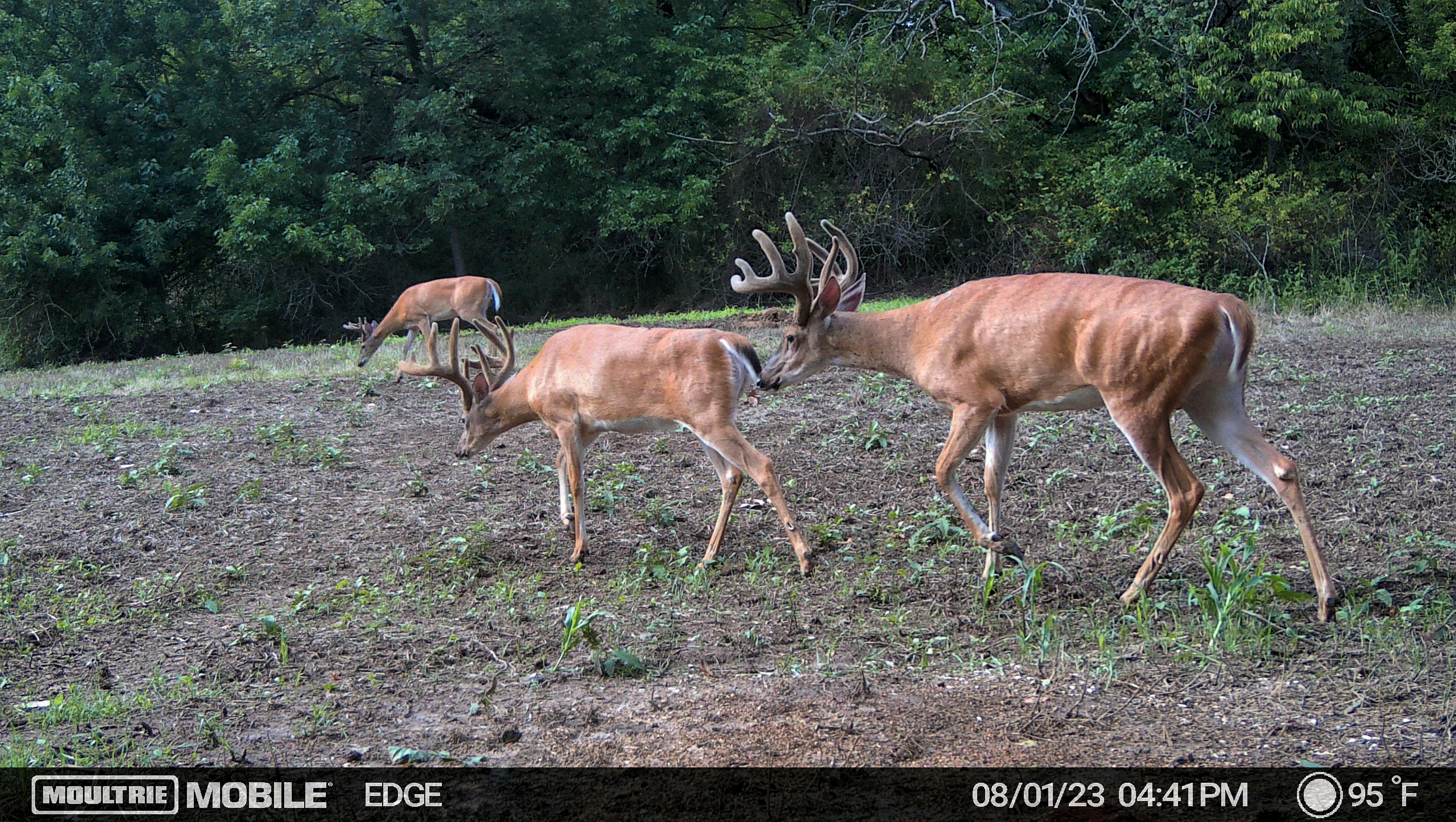
It’s pretty common for bucks to travel in same-sex packs—or bachelor groups—in summer an early fall. In my area, a 3- to 6-buck group is fairly common, but I’ve seen as many as 10 bucks in the same field. While these gangs of male deer are sure to break up as fall approaches, most of the bucks won’t be far from their summer haunts come September and the start of the bow season. This makes it important to know as much about bachelor groups as possible; how many deer, how individual bucks behave with each other, and more.
But trail cameras don't always do well with groups of deer. Think about it; the lead buck steps out of the woods, trips the camera, then lingers for a bit while he decides what part of the alfalfa field he wants to dine in that day. While he stands in front of the camera getting his pic taken, bucks two, three, four, and five saunter past him, and if you’re lucky, the camera gets one more deer (or maybe just a part of him) while the others remain undetected. Even if you have your camera set on video, you’ll likely miss at least some of the action and some of the deer.
The Takeaway
The camera hasn't failed. Instead, it has given you a hot tip that you need to act on. It would be great if there was a lazy man’s solution to the problem, but I don’t believe there is. If I think I’m missing info on a bachelor group (and I assume almost every buck I get a pic of in summer is part of one), I realize I either need to (a) get more cameras out in the immediate area or (b) spend some time glassing the spot from a distant vantage point.
Whenever possible, I opt for the second option and sneak into a spot with a binocular and/or spotting scope and settle in for a few glassing sessions. Typically, that'll will give me a much better idea of how many bucks are in the group, how they behave with each other, and if they enter or exit the field in any places other than where my main camera is—all of which is critical information come the archery opener.
5) Cameras Can Shrink (or Grow) Antlers
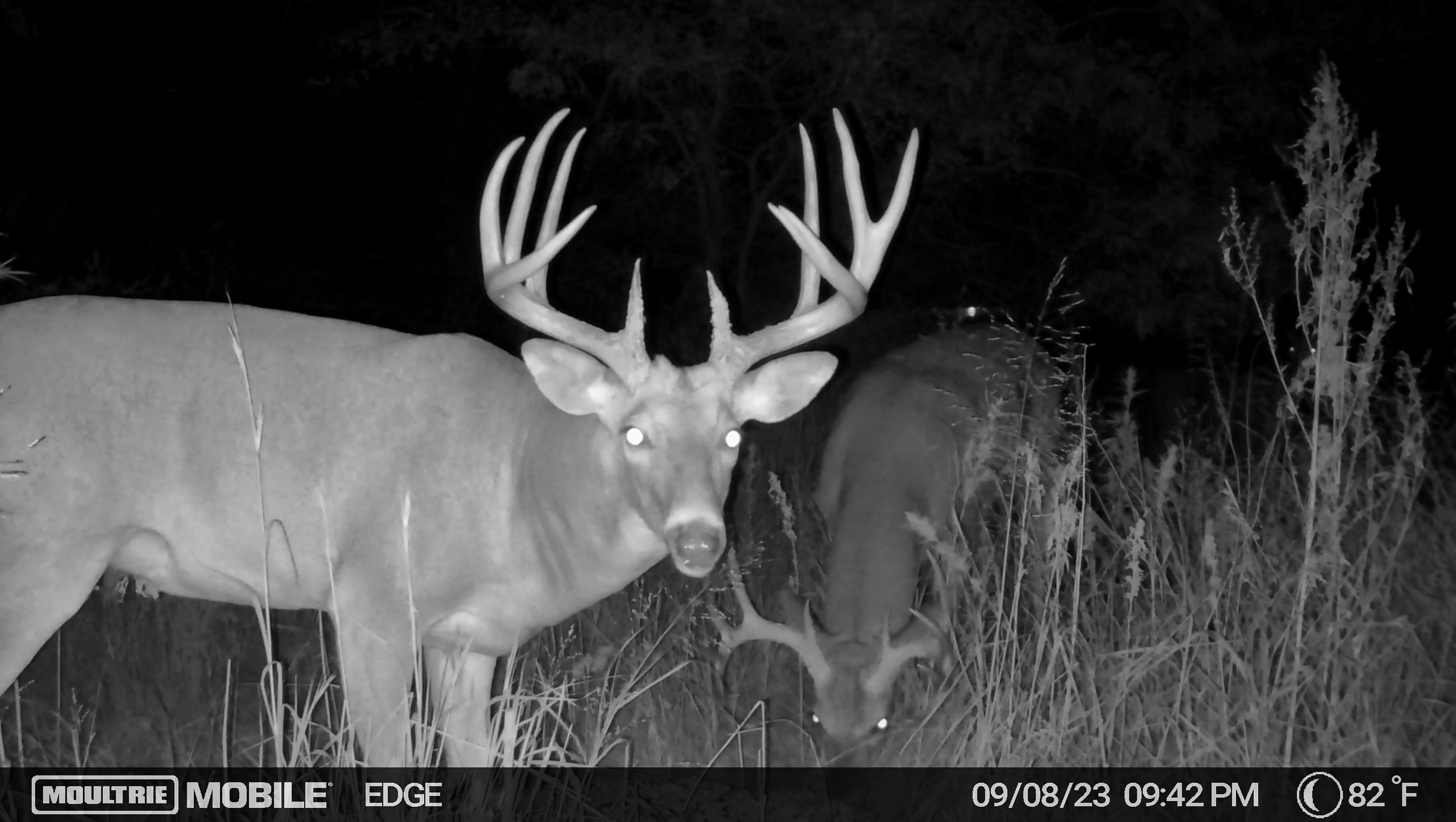
I rarely pat myself on the back when it comes to estimating the gross B&C score of bucks, but I have to admit I used to feel pretty cocky when it came to 2-½- and 3-½-year-old whitetails in my area. After seeing dozens of these deer over the years, I could typically look at a trail-cam pic and come up with an estimated gross score within 5 inches or so of the actual, something I’d proven when I (or a buddy) managed to kill the buck and put a tape to it.
Then along came a pretty 10-point buck a few years back. Our first pics of him came from the edge of a beanfied, just after the buck had shed velvet. Though he had gorgeous configuration and solid tines, everything about the rack looked thin and fairly immature. Two neighbors/hunting buddies and I share pics frequently, and when I called the buck “a 125-inch 2-year old” I got no argument. Then one of those buddies killed a great 10-point three weeks after the bow opener, and when we stood over the buck we all realized that it was the same deer—except far heavier and taller than we’d anticipated. That buck grossed a whisker shy of 155 inches, meaning my original estimate was off by close to 30!
Things can go the other way too, and it happened just last year. One of my target bucks was not so imaginatively named “The Big Ten” because he boasted (you guessed it) 10 tines that arced skyward off sweeping main beams. I had oodles of pics of this buck over a three-year span, and when I shared pics of last year’s images with friends, I had no estimates under 160 inches. One buddy—a B&C measurer who’s taped hundreds of really big whitetails—felt The Big Ten could gross 170 inches if he didn’t break any tines. Well you guessed it. When the buck was killed during late muzzleloader season, his gross score was in the high 150s. Even with a library of pics to scan, I’d missed him by close to a foot, and I wasn’t alone.
The Takeaway
Lots of factors—usually a combination of them—can make a buck’s antlers look bigger or smaller in pics than they actually are. In my experience, night images are the ripest for scoring errors; flash (including IR and no-glow) really messes with our ability to gauge tine length and antler mass, probably because the combination of light and shadow fools us.
Camera position is another consideration. Cams pointed down will inevitably shrink a buck’s rack, while those slightly lower than the deer can make even a mediocre rack look like a skyscraper. And even when you’ve got the camera positioned perfectly, the buck’s stance can transform a solid 10 into a Booner, and vice-versa. Ideally, I’ve got my camera set on multi-shot mode, and I’ll have multiple pics, taken from several angles (and hopefully several encounters) that will paint a clearer picture of true antler size.
Finally, pay close attention to body size; The Big Ten’s rack looked far bigger than it was because he was just not a big-bodied deer, and especially so for the area. This is farm country, where most 5-½-year-old bucks will field dress far above 200 pounds. This buck was 20 pounds below that weight. In hindsight, I knew I was factoring the buck’s age into my estimates and assigning him a typical body weight for his age class. In contrast, we have pics of a buck we call “Bruce” a clean 10-point with what looks like a classic 150-inch rack. But Bruce is not only 7½ years old, he is probably the largest-bodied buck I’ve ever seen in this country, with a bull-like neck and shoulders. I’ve kind of given up estimating his antlers, as any critter of his size and age is a once-in-a-lifetime deer here. That said, it wouldn’t surprise me if that 150-inch rack is much bigger.

